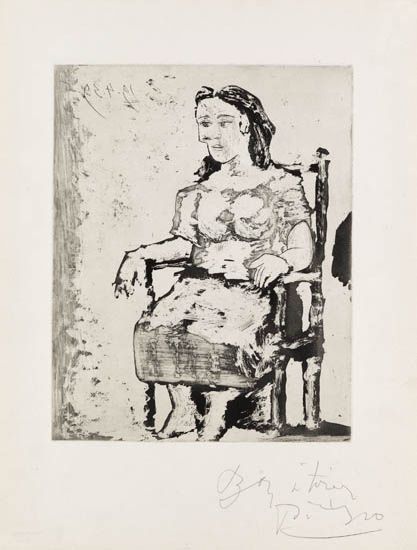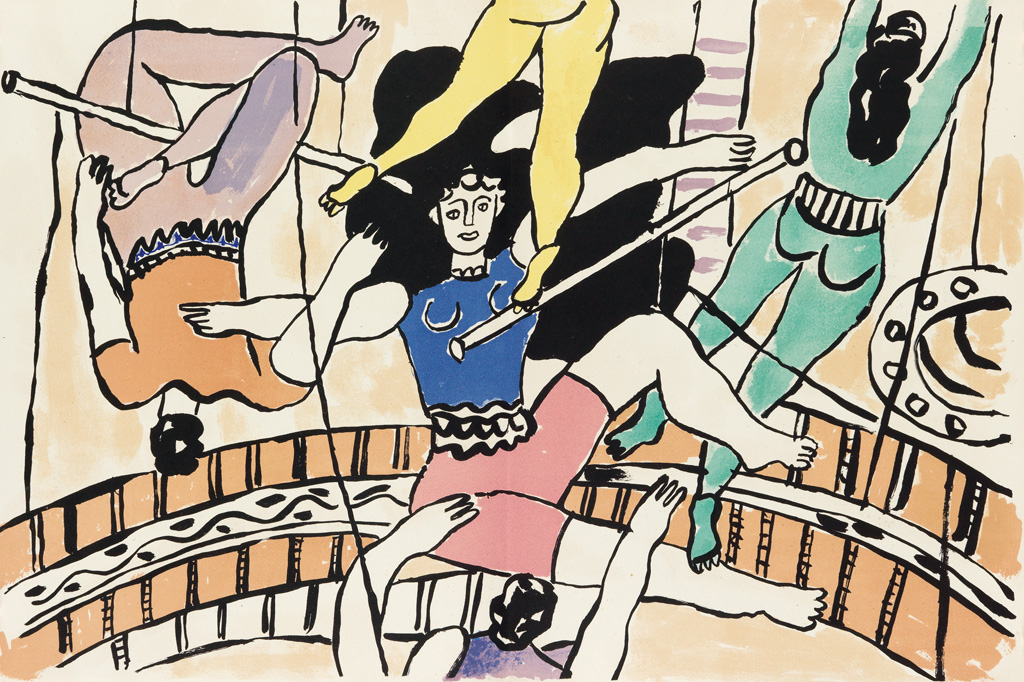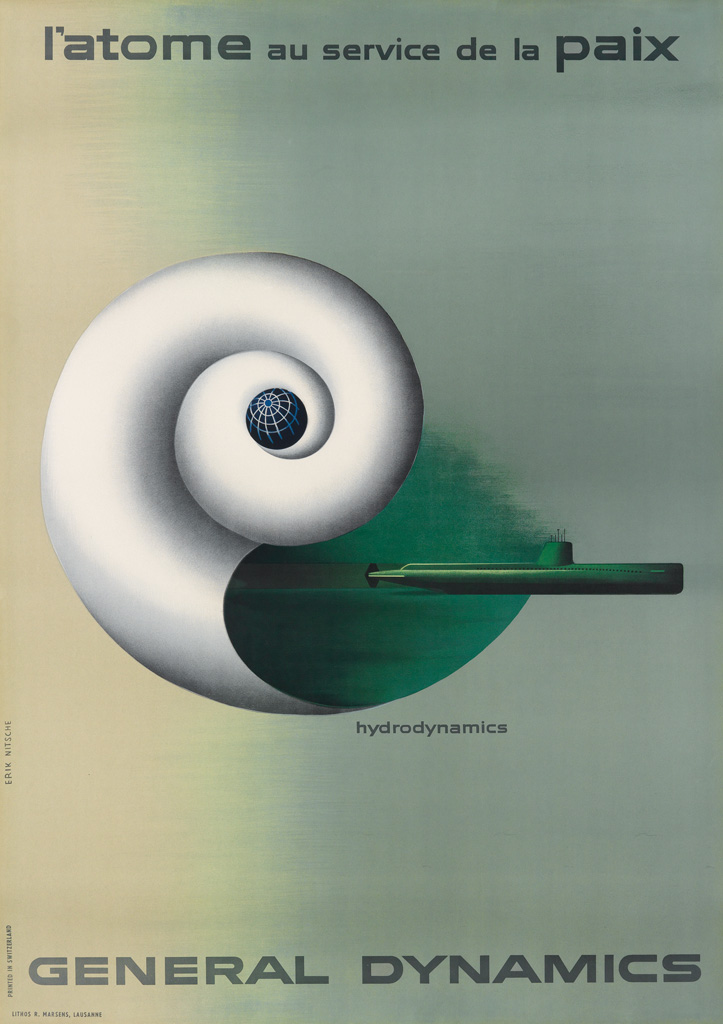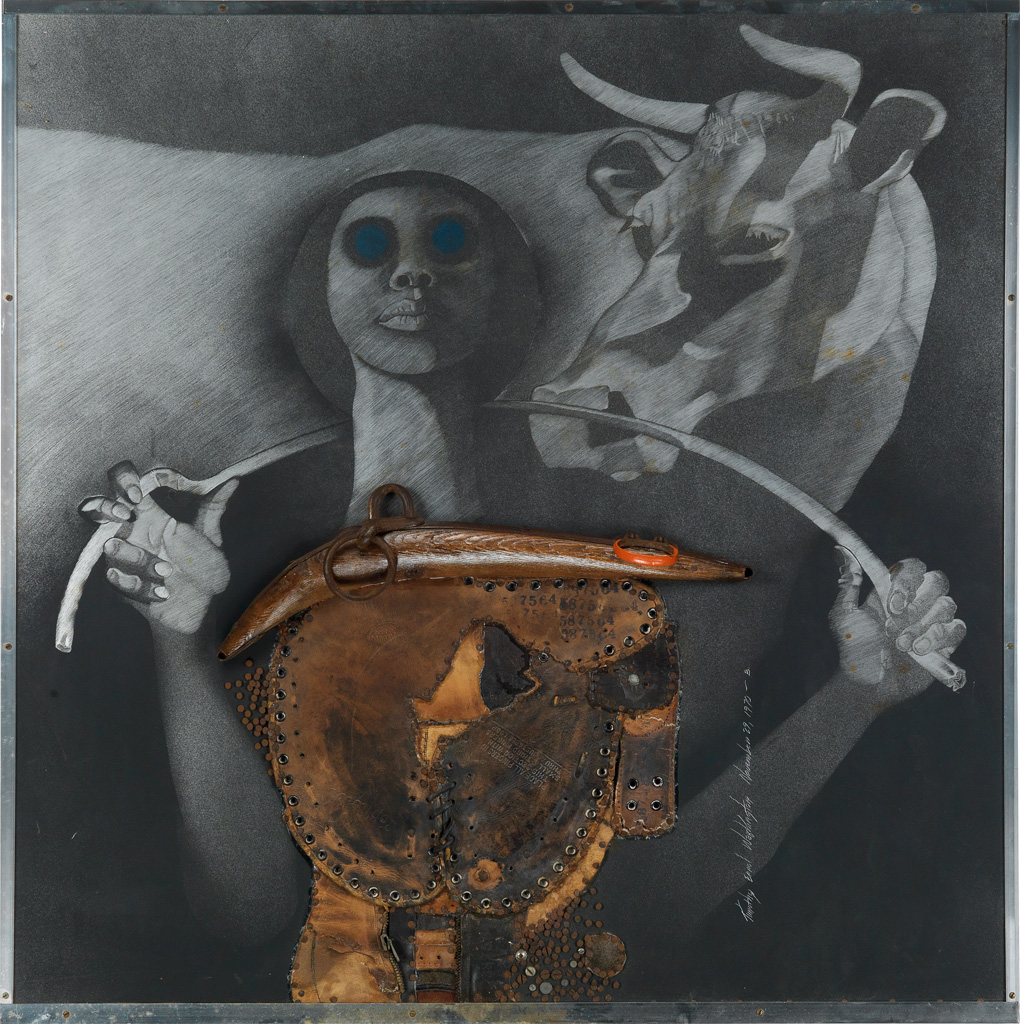Notes from the Catalogue: Picasso’s Dora Maar
Among the highlights of our May 1, 2013 auction of Old Master Through Modern Prints is a brilliant, richly-inked impression of Pablo Picasso’s aquatint, scraper, burin and drypoint, Femme au fauteuil II: Dora Maar. This extremely scarce proof, before steel facing and aside from the edition of 50, is signed and inscribed Bon à tirer in pencil, lower right.

Picasso produced more than 20,000 artworks in a wide variety of media over the course of his long, steady career–and more than 2,400 of these works were etchings, lithographs, woodcuts, drypoints and linoleum cuts. His work encompasses an enormous range of styles and movements, across realism and abstraction, and including Cubism, Neoclassicism, Surrealism and Expressionism.
The artist made his first prints after he moved from his home country to Paris in 1900, and returned briefly to printmaking in the 1930s, but the majority of his prints were produced after World War II in close partnership with various Parisian printmaking / publishing houses.
Ceaselessly experimental, Picasso viewed printmaking as a way of tracking the evolution of his thoughts, i.e. he could preserve an idea through a print and then continue to build on the concept by revisiting the same plate or stone.
This particular print represents one of Picasso’s many lovers, Dora Maar, an artist herself, and closest to Picasso during the late 1930s / early 1940s while she was documenting Picasso’s process creating one of his most iconic works, Guernica.
Prior to Maar, Picasso’s primary mistress was Marie-Thérèse Walter, who he met in 1927 when she was only 17–she was Picasso’s muse and the model for many of his paintings (and subsequently bore one of his four children). In 1944, at the age of 63, Picasso grew bored with Maar and began an affair with a 23-year-old art student, Françoise Gilot. He continued to be inspired by, and seek the company of, younger women well into his 70s.
Femme au fauteuil II: Dora Maar is an example of a bon à tirer, meaning “good to print,” final proof of this portrait before the plate was steel-faced and prepared for producing the edition of 50 impressions. Bon à tirer prints are particularly significant because they were the prints Picasso personally scrutinized and signed to indicate the plate was approved for printing–this specific impression was the model that all prints in the edition were to match.


















